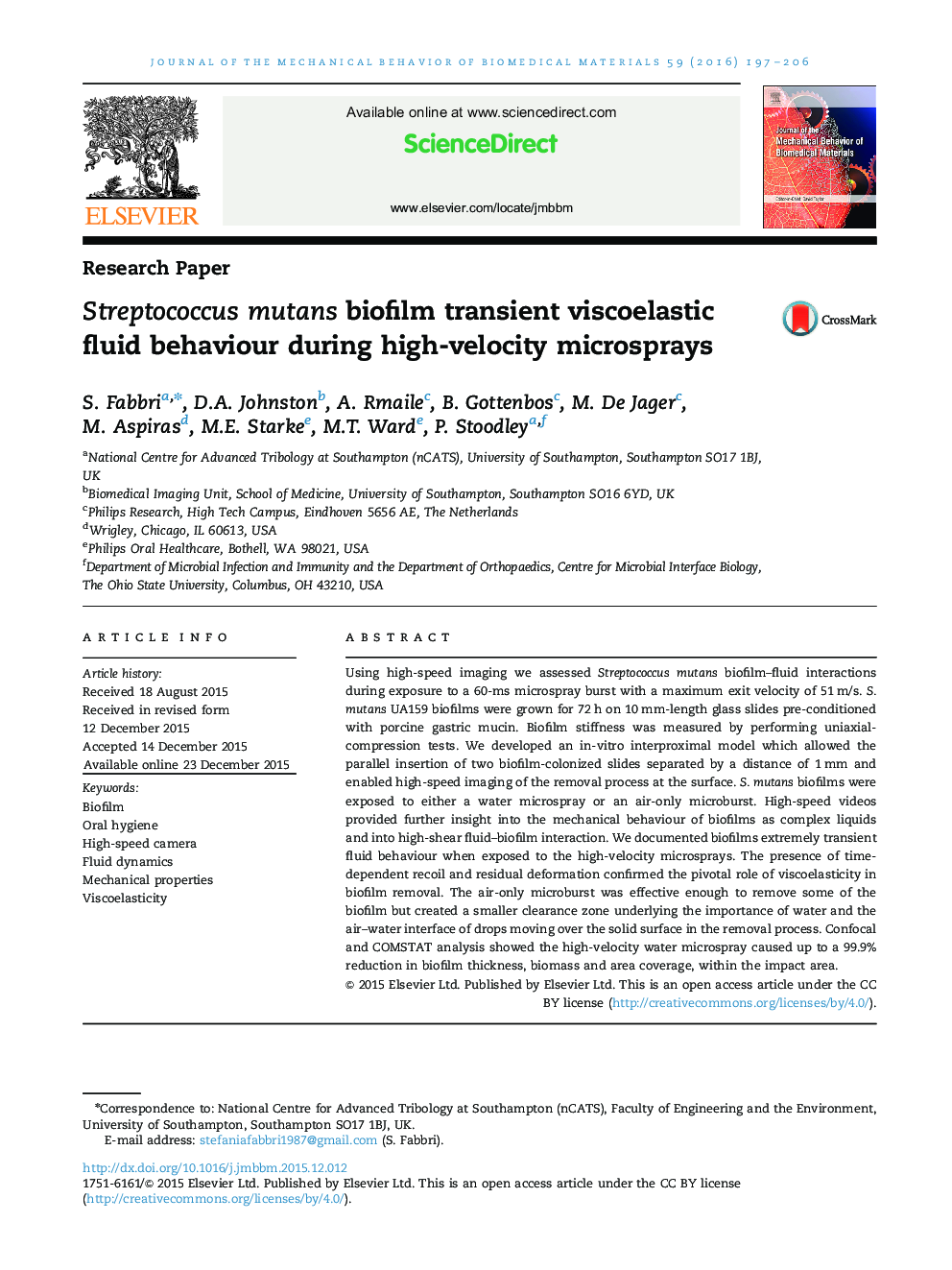| Article ID | Journal | Published Year | Pages | File Type |
|---|---|---|---|---|
| 7208066 | Journal of the Mechanical Behavior of Biomedical Materials | 2016 | 10 Pages |
Abstract
Using high-speed imaging we assessed Streptococcus mutans biofilm-fluid interactions during exposure to a 60-ms microspray burst with a maximum exit velocity of 51Â m/s. S. mutans UA159 biofilms were grown for 72Â h on 10Â mm-length glass slides pre-conditioned with porcine gastric mucin. Biofilm stiffness was measured by performing uniaxial-compression tests. We developed an in-vitro interproximal model which allowed the parallel insertion of two biofilm-colonized slides separated by a distance of 1Â mm and enabled high-speed imaging of the removal process at the surface. S. mutans biofilms were exposed to either a water microspray or an air-only microburst. High-speed videos provided further insight into the mechanical behaviour of biofilms as complex liquids and into high-shear fluid-biofilm interaction. We documented biofilms extremely transient fluid behaviour when exposed to the high-velocity microsprays. The presence of time-dependent recoil and residual deformation confirmed the pivotal role of viscoelasticity in biofilm removal. The air-only microburst was effective enough to remove some of the biofilm but created a smaller clearance zone underlying the importance of water and the air-water interface of drops moving over the solid surface in the removal process. Confocal and COMSTAT analysis showed the high-velocity water microspray caused up to a 99.9% reduction in biofilm thickness, biomass and area coverage, within the impact area.
Related Topics
Physical Sciences and Engineering
Engineering
Biomedical Engineering
Authors
S. Fabbri, D.A. Johnston, A. Rmaile, B. Gottenbos, M. De Jager, M. Aspiras, E.M. Starke, M.T. Ward, P. Stoodley,
